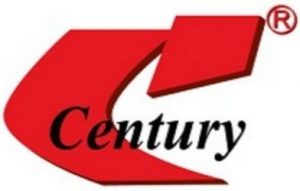The CPTPP trade deal is set to become a reality with a sixth country, Australia, having lodged its ratification documents.
The deal will enter into force on December 30, Trade Minister David Parker announced this morning after receiving Australia’s paperwork triggering a 60-day countdown.
“This is a momentous day, not just for New Zealand…but for world trade,” Parker said.
The World Trade Organisation was in a parlous state at present and the alternatives were plurilateral agreements.
“The most important one on offer at the moment is the CPTPP…It has benefits that will spread throughout the economy to every person in New Zealand from the factory floor to the farm owner, to all of the other service industries that rely upon our export industries.”
The paperwork was handed over at the Beehive by Australian High Commissioner Ewen McDonald.
New Zealand is the depositary of the deal, which was launched in 2008.
McDonald said he acknowledged the leadership of New Zealand in the CPTPP together with Japan and Australia.
Now officially called the Comprehensive and Progressive Agreement on Trans Pacific Partnership, the other countries that have ratified are Japan, Canada, Mexico, and New Zealand.
The countries yet to ratify are Chile, Malaysia, Peru, Vietnam and Brunei.
The deal will mark the first free trade deal for New Zealand with Japan, the third largest economy in the world, and Mexico and Canada.
The first round of tariff cuts for New Zealand exporters will take effect on December 30 and because of the timing, a second round will take place on January 1, 2019, Parker said.
“New Zealand’s ratification means that from day one our businesses will be able to take advantage of improved trading conditions and lower tariffs,” Parker said.
/arc-anglerfish-syd-prod-nzme.s3.amazonaws.com/public/BNZXSF6QING7HHFOK6ZUMJIDAY.jpg)
“Economic modelling shows exports, the New Zealand standard of living, and wages, will increase as a consequence,” Parker said.
The CPTPP markets are collectively home to 480 million consumers and comprise 13.5 per cent of world GDP.
The United States led the TPP negotiations under President Barack Obama but withdrew from the deal after Donald Trump was sworn in as President in January 2017.
Negotiations among the remaining 11 countries were held throughout 2017 and a decision was made to continue without the US.
Labour opposed the TPP in Opposition but made enough changes after taking power to announce its support about a year ago.
It was renamed the CPTPP at the instigation of Canada.
Parker said the CPTPP was a “fantastic protection and advancement of New Zealand’s trading interests.”
“The protective benefits of this agreement and the signal it send to the rest of the world that there is a new rules-based order out there can buy into if they want is an incredibly signal at this particular time.”
Parker said it was a high quality agreement and he upgraded his previous estimate of the pact from a seven out of 10.
“I reckon I’m up to an eight or nine now because the relative degradation of other things means it is just so much more important than it was.
“It is a high quality agreement and if we were offered other agreement that were this high quality we would be in them with a flash.”
Citing some specific benefits, Parker said fish exports to Mexico currently face 20 per cent tariffs.
Buttercup squash growers, mainly is Gisborne, would be saving $1.5 million a year in tariff reductions.
Tariffs on beef into Japan will reduce from 38 per cent to 9 per cent over a longer period of time.
Tariffs on wine into Canada will go immediately.
Horticultural exports, including carrot and radish seed, would have much lower tariffs.
Other countries that have expressed an interest in joining the CPTPP include Colombia, Britain, South Korea, Indonesia, Thailand and China.
TPP-CPTPP TIMELINE
1999
National trade minister Lockwood Smith clinches NZ-Singapore Closer
Economic Partnership (CEP). But Clinton’s US rejects invitation by NZ to
expand to five-party trade talks including Australia and Chile.
2001
New Zealand – Singapore Closer Economic Partnership (CEP) begins after new Labour passes related laws.
2005
Chile and Brunei join CEP making it the P4, also known as Trans Pacific
Strategic Economic Partnership – but it is minus an investment and
financial services chapter.
2007
July: Trade minister Phil Goff talks to US Trade Representative Susan
Schwab in Cairns about the US joining P4, which it scheduled to start
investment and financial services talks.
2008
September: US Trade Rep Schwab announces from New York US will enter
negotiations to become a full partner in the TPP (P4), under outgoing
President, George W Bush.
November: New Trade Minister Tim Groser announces at Apec in Peru that
Australia, Vietnam and Peru will join negotiations, yet to be started.
2009
February: New US President Barack Obama delays joining until his Administration assesses it.
November: United States Administration confirms it will join TPP talks.
2010
March: First round of TPP talks among eight countries begins in Melbourne
October: Malaysia joins TPP talks.
November: Japan announces it will consider joining TPP talks.
2011
March: Tsunami catastrophe delays Japan’s consideration.
November: Obama hosting Apec Hawaii holds TPP meeting and Honolulu Declaration agrees to comprehensive TPP.
2012
June: Mexico and Canada announce they will join TPP talks, making 11. Japan still considering.
2013
March: Japan under PM Shinzo Abe announces it will join TPP talks.
2015
October: TPP talks conclude in Atlanta, US.
2016
Countries begin domestic processes to ratify TPP but in the US,
presidential candidates Donald Trump and Hillary Clinton promise to
withdraw from the deal. Labour in NZ decides to oppose TPP.
2017
January: President Donald Trump withdraws from TPP.
November: TPP becomes CPTPP ahead of Apec summit in Vietnam and Labour
agrees to support it with modifications. Planned CPTPP signing by
leaders at Apec cancelled after no-show at meeting by Canada.
2018
March: CPTPP signed by ministers in Chile. Domestic ratification processes begin.
October: Sixth signatory, Australia, triggers entry into force of CPTPP on December 30.
https://www.nzherald.co.nz/nz/news/article.cfm?c_id=1&objectid=12151868


